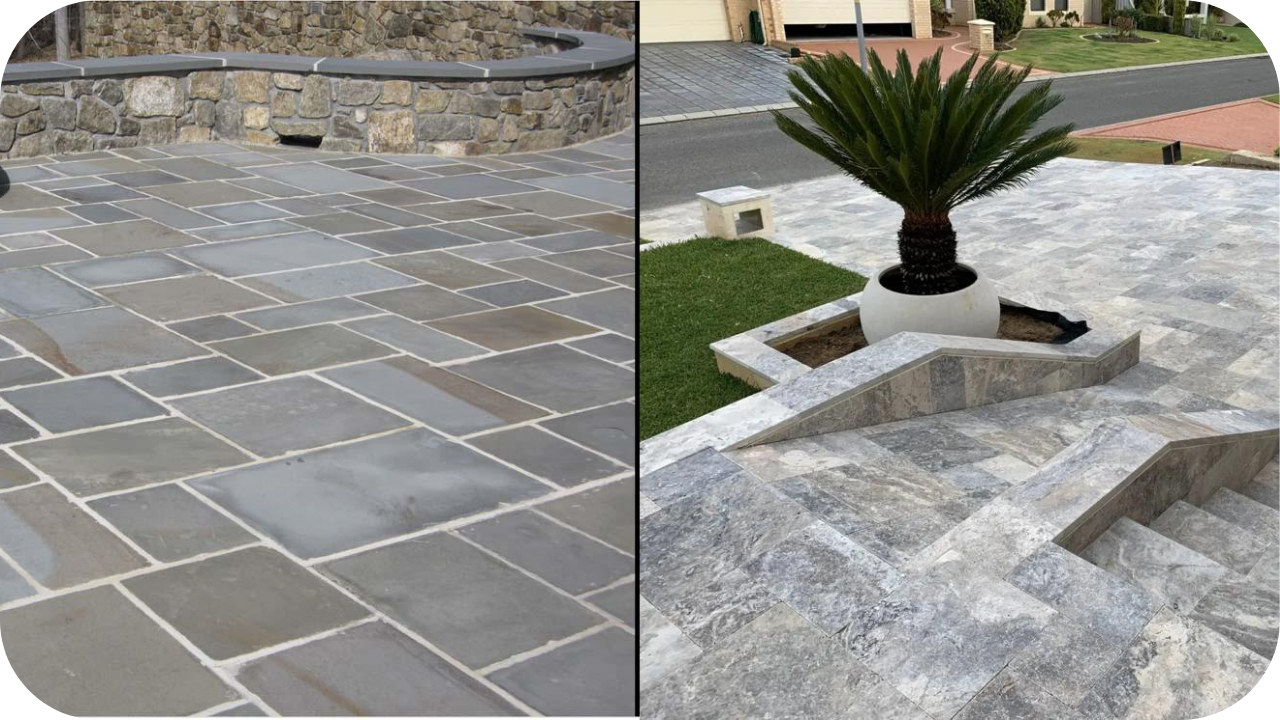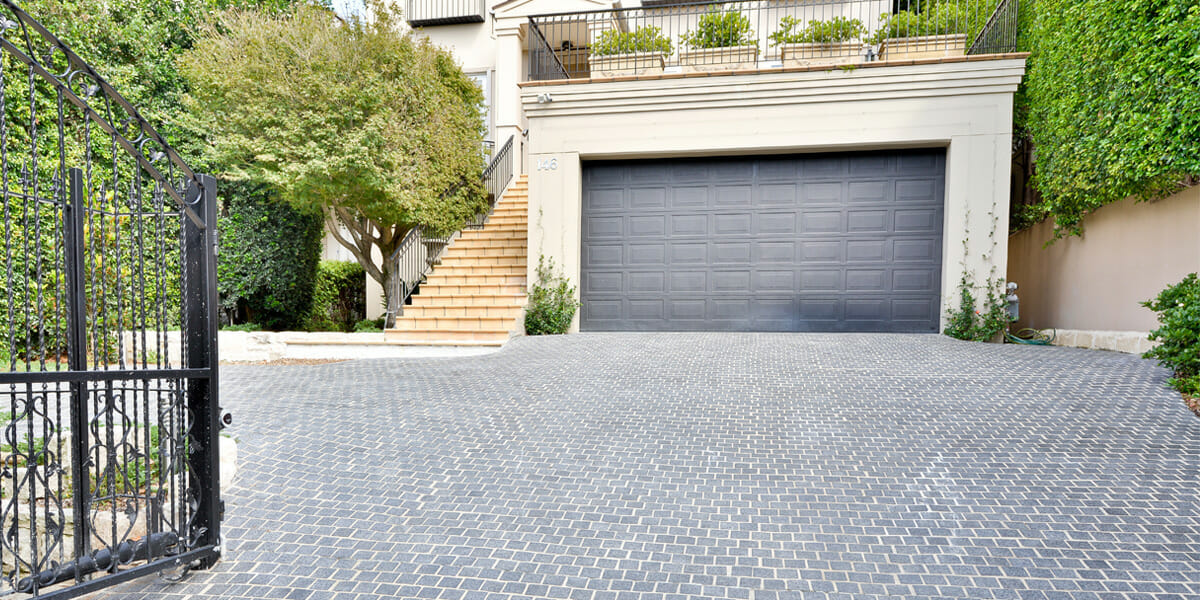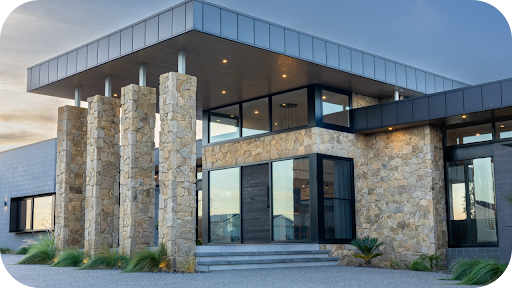
Choosing the right paver can make all the difference in the look, feel, and function of your outdoor space. In Australia, bluestone and travertine remain two of the most popular paving choices for homeowners seeking both performance and style.
Each offers distinct visual and practical qualities, but which one is better suited to your project? This comparison will help you weigh up both options clearly and confidently, taking into account everything from durability and appearance to cost, comfort, and maintenance for long-term outdoor success.
What Is Bluestone?
Bluestone is a dense, durable volcanic stone commonly used in Australian landscaping and construction. Known for its rich blue-grey colour and fine-grained texture, it delivers a sleek, modern aesthetic that works beautifully in both residential and commercial settings.
Victorian Bluestone is the most widely recognised local variety, valued for its strength and versatility. Finishes range from sawn and honed to flamed and split, offering a variety of looks and slip resistance levels.
Bluestone is often used for patios, driveways, pathways, and retaining walls, making it a reliable and stylish option for outdoor projects across different climates and design styles.
What Is Travertine?
Travertine is a natural stone formed from limestone deposits, typically found near mineral springs. It’s prized for its warm, earthy tones and distinctive surface marked by natural pits and voids.
Commonly sourced from regions such as Turkey and Italy, travertine is widely used in both traditional and Mediterranean-inspired designs. Finishes like tumbled, honed, and brushed allow it to suit various outdoor applications.
Its light colour palette helps keep surfaces cool, which is especially useful in sunny Australian backyards. Travertine is a popular choice for pool surrounds, courtyards, garden paths, and alfresco spaces where comfort and aesthetic charm are equally important.
Key Comparison Factors Between Bluestone and Travertine Pavers
Choosing between bluestone and travertine comes down to more than looks. Here’s how these two stones compare across all the important factors that affect outdoor performance and style:
1. Appearance & Aesthetic Appeal
Bluestone offers a bold, modern look with deep blue-grey tones that suit contemporary and architectural landscapes. It provides a smooth, refined surface when honed or sawn, while flamed finishes add texture.
Travertine, on the other hand, exudes warmth and rustic charm with its earthy cream, beige, and honey hues. The natural pitting and soft variation in colour make it perfect for relaxed, Mediterranean or classic-style outdoor spaces.
2. Durability & Hardness
Bluestone is a dense, hardwearing stone that handles heavy foot and vehicle traffic with ease. It resists cracking, weathering, and erosion, making it ideal for driveways and high-use zones.
Travertine is softer in comparison but still strong enough for most residential outdoor areas. While it may not perform as well under extreme pressure, its performance in low to medium-traffic zones is dependable with proper installation and sealing.
3. Surface Grip & Texture
Bluestone performs well in wet zones thanks to its naturally grippy surface, especially when finished with a flamed, sawn, or split texture. Its fine-grain structure adds extra traction underfoot in outdoor settings.
Travertine, with its porous surface and gentle pitting, offers excellent foot stability when tumbled or brushed. This makes it a preferred choice around pools, walkways, and garden zones where safety and comfort go hand in hand.
4. Heat Retention & Comfort Underfoot
Bluestone tends to absorb and retain more heat, especially in full sun, which can make it hotter underfoot during peak summer days. This can be addressed with shading or cooler finishes.
Travertine naturally reflects heat due to its light colouring and airy composition, staying cooler even under direct sunlight. This makes travertine ideal for barefoot areas like pool decks, garden lounges, or any space exposed to high sun.
5. Maintenance & Longevity
Bluestone requires sealing to protect against stains, particularly in entertaining areas where food or drink spills may occur. It ages well with minimal surface erosion and can withstand decades of outdoor use.
Travertine, being more porous, benefits from frequent sealing to maintain its finish and resist moisture absorption. Both stones can last many years with proper care, but bluestone demands less upkeep over time due to its lower porosity.
6. Cost & Value for Money
Bluestone generally sits at a higher price point, especially for premium finishes and thicker formats, but delivers long-term value through durability and minimal upkeep.
Travertine is often more affordable upfront and offers a good aesthetic return, particularly for larger areas. However, maintenance costs may be higher due to regular sealing. Your final cost will depend on project size, finish, and intended use, so weighing upfront and lifetime value is essential.
Pros and Cons of Bluestone and Travertine Pavers
Both bluestone and travertine bring unique qualities to outdoor design. Use this side-by-side comparison to understand the strengths and considerations of each natural stone for paving applications.
| Feature | Bluestone | Travertine |
| Pros | – Durable and strong enough for driveways and high-traffic areas | – Naturally cool underfoot, perfect for sunny areas |
| – Sleek, modern look with consistent grey-blue tones | – Warm, rustic aesthetic with soft beige and cream colours | |
| – Available in sawn, honed, or flamed finishes for grip and style | – Tumbled and brushed finishes offer comfort and visual softness | |
| – Holds up well to weather and erosion over time | – Great for pool surrounds, courtyards, and garden settings | |
| – Pairs well with modern and architectural home styles | – Generally more affordable and easier to cut for curved spaces | |
| – Suitable for both residential and commercial landscaping projects | – Light-coloured tones help reflect heat and brighten outdoor areas | |
| Cons | – Retains heat in full sun, can be hot underfoot | – More porous and may need frequent sealing |
| – Higher upfront cost, especially for premium finishes | – Natural variation may not suit all design preferences | |
| – Requires sealing to prevent stains in entertaining areas | – Polished surfaces can become slippery when wet |
How to Choose Between Bluestone and Travertine Pavers
Not sure which stone is right for your project? The choice depends on how you plan to use the space, your style preferences, and your budget. Here are the key things to consider:
- Assess how the space will be used: For driveways or high-traffic zones, go with durable bluestone. For relaxed, barefoot-friendly spaces like pool surrounds or garden patios, travertine offers comfort, texture, and a cooler surface.
- Match the stone to your home’s style: Bluestone pairs well with modern, industrial, and minimalist architecture. Travertine suits coastal, traditional, and Mediterranean homes with its earthy tones and natural, time-worn look.
- Factor in heat and sun exposure: Choose travertine for sunny areas, as it stays cooler underfoot. Bluestone retains more heat and works better in shaded spaces or temperate climates with less direct sun.
- Consider ongoing maintenance: Bluestone requires less maintenance overall once sealed. Travertine needs more regular sealing to prevent moisture and staining, especially in areas exposed to weather or frequent foot traffic.
- Weigh up the total project budget: Travertine is often more affordable for large areas. Bluestone is a bigger upfront investment, but it offers durability and longevity that can provide better value in the long run.
Final Verdict: Which One Should You Choose?
Bluestone and travertine each bring standout qualities to outdoor spaces. Bluestone offers unmatched strength and a sleek, contemporary edge, ideal for high-traffic zones.
Travertine delivers natural warmth, comfort underfoot, and timeless appeal for relaxed, sunlit areas. Your ideal choice depends on usage, design vision, and budget.
For expert guidance and access to premium pavers, connect with the specialists at Splendour in Stone today.
More To Explore

Grey Granite Cobblestones for Driveways: Strength and Style
Grey granite cobblestones combine strength, safety, and timeless appeal, making them a popular choice for Melbourne driveways and outdoor spaces. Their natural flamed texture offers

Granite Wall Cladding Melbourne: Modern and Classic Appeal
Granite wall cladding brings both modern sophistication and classic charm to Melbourne architecture. Known for its durability and natural beauty, granite transforms façades, feature walls,


